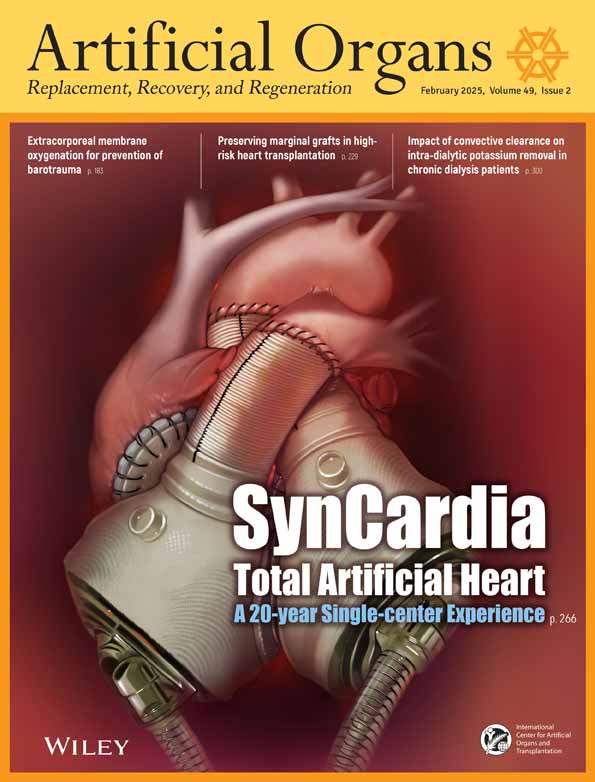Aortic regurgitation in left ventricular assist device patients: Does aortic root dilatation contribute to valve incompetence?
Both authors Gloria Färber and Ulrich Schneider contributed equally to this work.
Abstract
Background
Aortic regurgitation (AR) is a known complication after left ventricular assist device (LVAD) implantation potentially leading to recurrent heart failure. Possible pathomechanisms include valvular pathologies and aortic root dilatation. We assessed aortic root dimensions in a group of consecutive LVAD patients who received HeartMate 3.
Methods
Since 11/2015, we identified 68 patients with no or mild AR at the time of HeartMate 3 implantation who underwent serial echocardiography to assess AR and aortic root dimensions (annulus, sinus, and sinotubular junction). Median follow-up was 40 months (2–94 months). Results were correlated with clinical outcomes.
Results
Patients were 60 ± 10 years old, predominantly male (88%) and 35% presented in preoperative critical condition as defined by INTERMACS levels 1 and 2. During follow-up, 23 patients developed AR ≥ II (34%). Actuarial incidence was 8% at 1 year, 29% at 3 years and 41% at 5 years. Echocardiography revealed practically stable root dimensions at the latest follow-up compared to the preoperative state (annulus: 23 ± 3 mm vs. 23 ± 2 mm, sinus: 32 ± 4 mm vs. 33 ± 3 mm, sinotubular junction: 27 ± 3 mm vs. 28 ± 3 mm), irrespective of the development of AR. Serial CT angiograms were performed in 13 patients to confirm echocardiographic findings. Twenty-one patients died during LVAD support leading to a 5-year survival of 71%, showing no difference between patients with and without AR ≥ II (p = 0.573).
Conclusions
At least moderate AR develops over time in a substantial fraction of patients (one-third over 3 years). The mechanism does not seem to be related to dilatation of the aortic annulus or root.
CONFLICT OF INTEREST STATEMENT
None.




